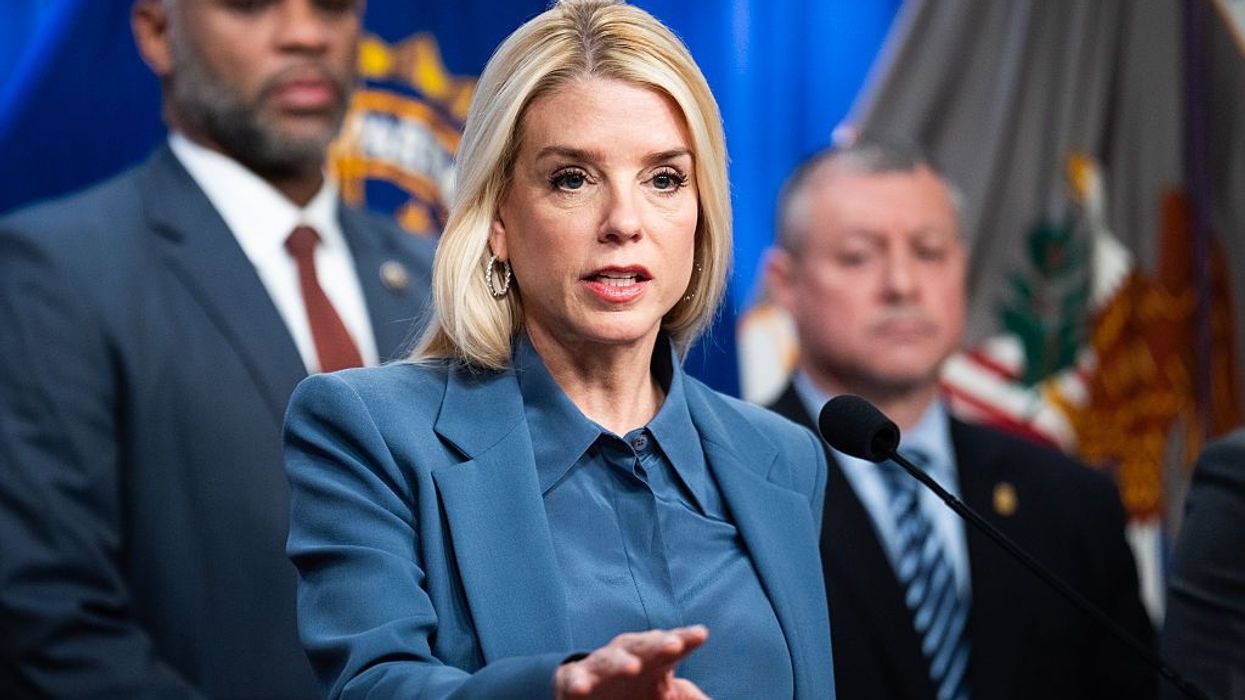December, 01 2019, 11:00pm EDT

Climate Fuelled Disasters Number One Driver of Internal Displacement Globally Forcing More Than 20 Million People a Year from Their Homes
Climate fuelled disasters were the number one driver of internal displacement over the last decade, forcing more than 20 million people a year - one person every two seconds - to leave their homes, said Oxfam today. The contentious issue of financial support for communities, including displaced communities, which have suffered loss and damage as a result of the climate crisis is expected to take centre stage at the UN Climate Summit in Madrid from 2 - 13 December 2019.
LONDON
Climate fuelled disasters were the number one driver of internal displacement over the last decade, forcing more than 20 million people a year - one person every two seconds - to leave their homes, said Oxfam today. The contentious issue of financial support for communities, including displaced communities, which have suffered loss and damage as a result of the climate crisis is expected to take centre stage at the UN Climate Summit in Madrid from 2 - 13 December 2019.
Oxfam's briefing 'Forced from Home' reveals that the number of climate related weather disasters that result in displacement have increased five-fold over the last decade. Today people are seven times more likely to be internally displaced by cyclones, floods and wildfires as they are by earthquakes and volcanic eruptions, and three times more likely than by conflict.
While no one is immune - in recent weeks wildfires in Australia and floods in Europe have displaced thousands of people - Oxfam's analysis shows that people in poor countries, who bear least responsibility for global carbon pollution, are most at risk.
Small Island Developing States make up seven of the 10 countries that face the highest risk of internal displacement from extreme weather events globally. On average nearly five percent of the population of Cuba, Dominica and Tuvalu, were displaced by extreme weather each year in the decade between 2008 and 2018. This is equivalent to almost half the population of Madrid being displaced in Spain annually. Small Island Developing States per capita emissions are around a third of those in high-income countries
The unequal impacts of the climate crisis are apparent across the globe. People in low and lower-middle income countries such as India, Nigeria and Bolivia are over four times more likely to be displaced by extreme weather disasters than people in rich countries such as the United States. Around 80 percent of all people displaced in the last decade live in Asia -home to 60 percent of the worlds population and over a third of the people globally who are living extreme poverty.
Chema Vera, Acting Executive Director of Oxfam International said:
"Our governments are fuelling a crisis that is driving millions of women, men and children from their homes and the poorest people in the poorest countries are paying the heaviest price."
The UN is due to conclude a review of the progress made under the 'Warsaw Mechanism on Loss and Damage' at the summit in Madrid, and developing countries will be pushing for the establishment of a new fund to help communities recover and rebuild after climate shocks.
Rich donor countries have largely left poor countries to cover the rising costs of extreme weather disasters themselves. New Oxfam analysis shows that economic losses from extreme weather disasters over the last decade were, on average, equivalent to two percent of affected countries' national income. That figure is much higher for many developing countries - up to an astonishing 20 percent for Small Island Developing States.
"People are taking to the streets across the globe to demand urgent climate action. If politicians ignore their pleas, more people will die, more people will go hungry and more people will be forced from their homes," said Vera.
"Governments can and must make Madrid matter. They must commit to faster, deeper emissions cuts and they must establish a new 'Loss and Damage' fund to help poor communities recover from climate disasters," he added.
'Forced from Home' also highlights that many poor countries face simultaneous and sometimes inter-related risks from conflict and the climate crisis. For example, Somalia, one of the poorest countries in the world, with per capita emissions just one fifth that of rich countries, saw 7.5 percent of its population - well over a million people - newly displaced by extreme weather events such as floods or conflict in 2018. Somalia is also struggling with years of severe drought that has wiped out crops and livestock.
The briefing shows that it is the poorest in society who are most vulnerable to climate-fuelled displacement. For example, in March 2019 Cyclone Idai displaced 51,000 people in Zimbabwe. The most affected communities lived in rural areas of Chimanimani and Chipinge where poor infrastructure and housing were unable to withstand the heavy rains and wind. Displaced women are particularly vulnerable as they, for example, face high levels of sexual violence.
Oxfam International is a global movement of people who are fighting inequality to end poverty and injustice. We are working across regions in about 70 countries, with thousands of partners, and allies, supporting communities to build better lives for themselves, grow resilience and protect lives and livelihoods also in times of crisis.
LATEST NEWS
Billionaire Palantir Co-Founder Pushes Return of Public Hangings as Part of 'Masculine Leadership' Initiative
"Immaturity masquerading as strength is the defining personal characteristic of our age," said one critic in response.
Dec 07, 2025
Venture capitalist Joe Lonsdale, a co-founder of data platform company Palantir, is calling for the return of public hangings as part of a broader push to restore what he describes as "masculine leadership" to the US.
In a statement posted on X Friday, Lonsdale said that he supported changing the so-called "three strikes" anti-crime law to ensure that anyone who is convicted of three violent crimes gets publicly executed, rather than simply sent to prison for life.
"If I’m in charge later, we won’t just have a three strikes law," he wrote. "We will quickly try and hang men after three violent crimes. And yes, we will do it in public to deter others."
Lonsdale then added that "our society needs balance," and said that "it's time to bring back masculine leadership to protect our most vulnerable."
Lonsdale's views on public hangings being necessary to restore "masculine leadership" drew swift criticism.
Gil Durán, a journalist who documents the increasingly authoritarian politics of Silicon Valley in his newsletter "The Nerd Reich," argued in a Saturday post that Lonsdale's call for public hangings showed that US tech elites are "entering a more dangerous and desperate phase of radicalization."
"For months, Peter Thiel guru Curtis Yarvin has been squawking about the need for more severe measures to cement Trump's authoritarian rule," Durán explained. "Peter Thiel is ranting about the Antichrist in a global tour. And now Lonsdale—a Thiel protégé—is fantasizing about a future in which he will have the power to unleash state violence at mass scale."
Taulby Edmondson, an adjunct professor of history, religion, and culture at Virginia Tech, wrote in a post on Bluesky that the rhetoric Lonsdale uses to justify the return of public hangings has even darker intonations than calls for state-backed violence.
"A point of nuance here: 'masculine leadership to protect our most vulnerable' is how lynch mobs are described, not state-sanctioned executions," he observed.
Theoretical physicist Sean Carroll argued that Lonsdale's remarks were symbolic of a kind of performative masculinity that has infected US culture.
"Immaturity masquerading as strength is the defining personal characteristic of our age," he wrote.
Tech entrepreneur Anil Dash warned Lonsdale that his call for public hangings could have unintended consequences for members of the Silicon Valley elite.
"Well, Joe, Mark Zuckerberg has sole control over Facebook, which directly enabled the Rohingya genocide," he wrote. "So let’s have the conversation."
And Columbia Journalism School professor Bill Grueskin noted that Lonsdale has been a major backer of the University of Austin, an unaccredited liberal arts college that has been pitched as an alternative to left-wing university education with the goal of preparing "thoughtful and ethical innovators, builders, leaders, public servants and citizens through open inquiry and civil discourse."
Keep ReadingShow Less
Hegseth Defends Boat Bombings as New Details Further Undermine Administration's Justifications
The boat targeted in the infamous September 2 "double-tap" strike was not even headed for the US, Adm. Frank Bradley revealed to lawmakers.
Dec 07, 2025
US Defense Secretary Pete Hegseth on Saturday defended the Trump administration's policy of bombing suspected drug-trafficking vessels even as new details further undermined the administration's stated justifications for the policy.
According to the Guardian, Hegseth told a gathering at the Ronald Reagan presidential library that the boat bombings, which so far have killed at least 87 people, are necessary to protect Americans from illegal drugs being shipped to the US.
"If you’re working for a designated terrorist organization and you bring drugs to this country in a boat, we will find you and we will sink you," Hegseth said. "Let there be no doubt about it."
However, leaked details about a classified briefing delivered to lawmakers last week by Adm. Frank Bradley about a September 2 boat strike cast new doubts on Hegseth's justifications.
CNN reported on Friday that Bradley told lawmakers that the boat taken out by the September 2 attack was not even headed toward the US, but was going "to link up with another, larger vessel that was bound for Suriname," a small nation in the northeast of South America.
While Bradley acknowledged that the boat was not heading toward the US, he told lawmakers that the strike on it was justified because the drugs it was carrying could have theoretically wound up in the US at some point.
Additionally, NBC News reported on Saturday that Bradley told lawmakers that Hegseth had ordered all 11 men who were on the boat targeted by the September 2 strike to be killed because "they were on an internal list of narco-terrorists who US intelligence and military officials determined could be lethally targeted."
This is relevant because the US military launched a second strike during the September 2 operation to kill two men who had survived the initial strike on their vessel, which many legal experts consider to be either a war crime or an act of murder under domestic law.
Rep. Jim Himes (D-Conn.), the ranking member of the House Permanent Select Committee on Intelligence, watched video of the September 2 double-tap attack last week, and he described the footage as “one of the most troubling things I’ve seen in my time in public service.”
“Any American who sees the video that I saw will see its military attacking shipwrecked sailors,” Himes explained. “Now, there’s a whole set of contextual items that the admiral explained. Yes, they were carrying drugs. They were not in position to continue their mission in any way... People will someday see this video and they will see that that video shows, if you don’t have the broader context, an attack on shipwrecked sailors.”
While there has been much discussion about the legality of the September 2 double-tap strike in recent days, some critics have warned that fixating on this particular aspect of the administration's policy risks taking the focus off the illegality of the boat-bombing campaign as a whole.
Daphne Eviatar, director for security and human rights for Amnesty International USA, said on Friday that the entire boat-bombing campaign has been "illegal under both domestic and international law."
"All of them constitute murder because none of the victims, whether or not they were smuggling illegal narcotics, posed an imminent threat to life," she said. "Congress must take action now to stop the US military from murdering more people in the Caribbean and Eastern Pacific."
Keep ReadingShow Less
Leaked Memo Shows Pam Bondi Wants List of 'Domestic Terrorism' Groups Who Express 'Anti-American Sentiment'
"Millions of Americans like you and I could be the target," warned journalist Ken Klippenstein of the new memo.
Dec 07, 2025
A leaked memo written by US Attorney General Pam Bondi directs the Department of Justice to compile a list of potential "domestic terrorism" organizations that espouse "extreme viewpoints on immigration, radical gender ideology, and anti-American sentiment."
The memo, which was obtained by journalist Ken Klippenstein, expands upon National Security Presidential Memorandum-7 (NSPM-7), a directive signed by President Donald Trump in late September that demanded a "national strategy to investigate and disrupt networks, entities, and organizations that foment political violence so that law enforcement can intervene in criminal conspiracies before they result in violent political acts."
The new Bondi memo instructs law enforcement agencies to refer "suspected" domestic terrorism cases to the Joint Terrorism Task Forces (JTTFs), which will then undertake an "exhaustive investigation contemplated by NSPM-7" that will incorporate "a focused strategy to root out all culpable participants—including organizers and funders—in all domestic terrorism activities."
The memo identifies the "domestic terrorism threat" as organizations that use "violence or the threat of violence" to advance political goals such as "opposition to law and immigration enforcement; extreme views in favor of mass migration and open borders; adherence to radical gender ideology, anti-Americanism, anti-capitalism, or anti-Christianity; support for the overthrow of the United States Government; hostility towards traditional views on family, religion, and morality."
Commenting on the significance of the memo, Klippenstein criticized mainstream media organizations for largely ignoring the implications of NSPM-7, which was drafted and signed in the wake of the murder of right-wing activist Charlie Kirk.
"For months, major media outlets have largely blown off the story of NSPM-7, thinking it was all just Trump bluster and too crazy to be serious," he wrote. "But a memo like this one shows you that the administration is absolutely taking this seriously—even if the media are not—and is actively working to operationalize NSPM-7."
Klippenstein also warned that NSPM-7 appeared to be the start of a new "war on terrorism," but "only this time, millions of Americans like you and I could be the target."
Keep ReadingShow Less
Most Popular


